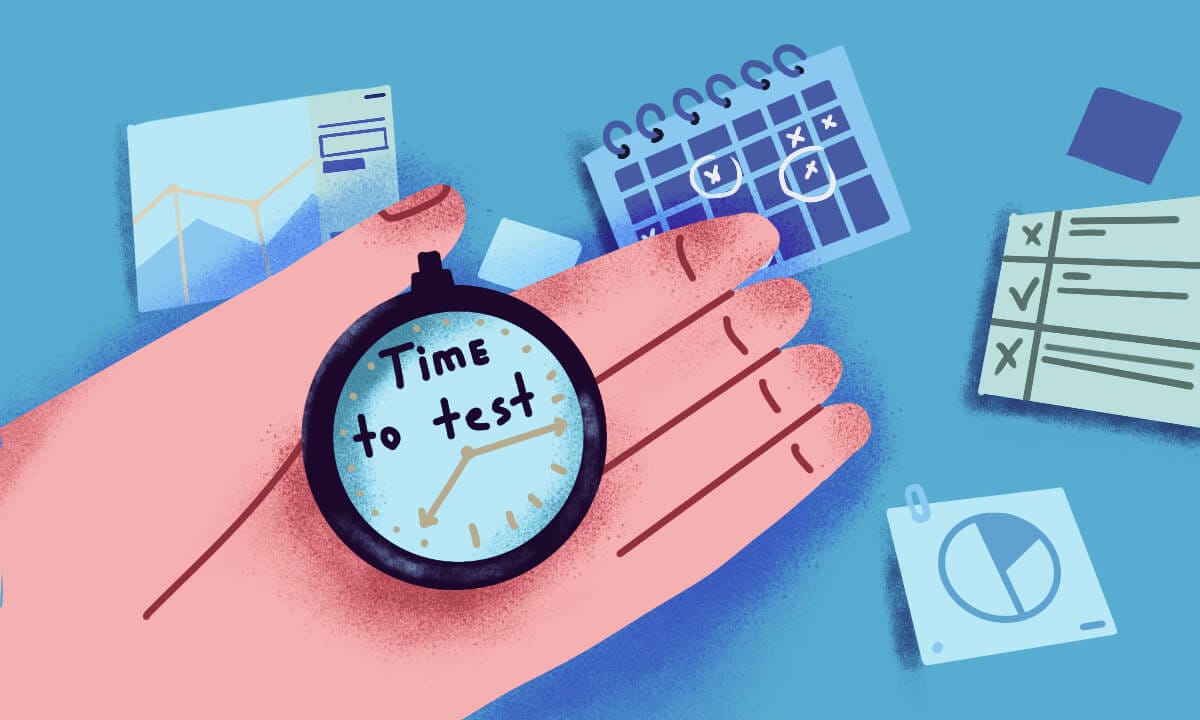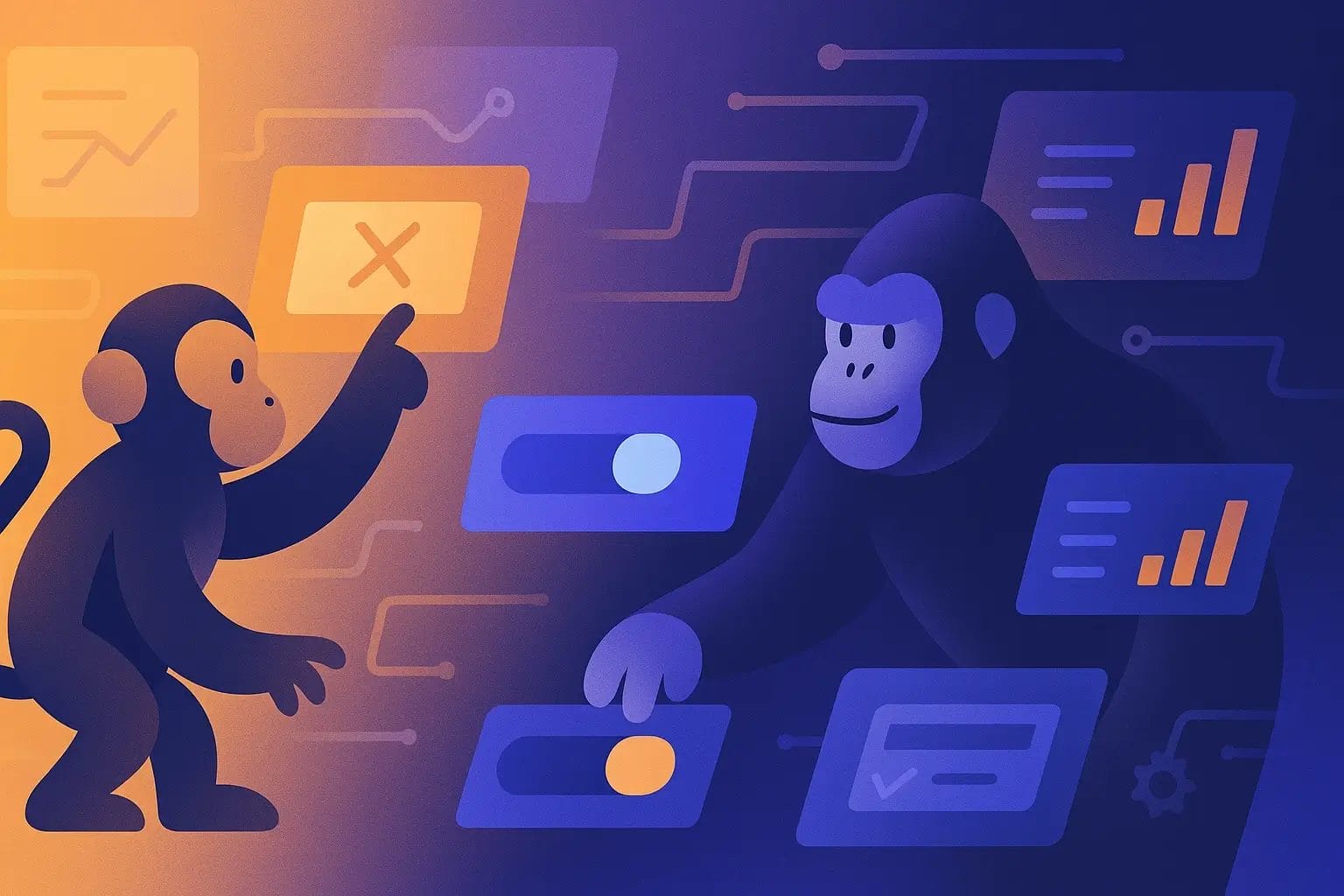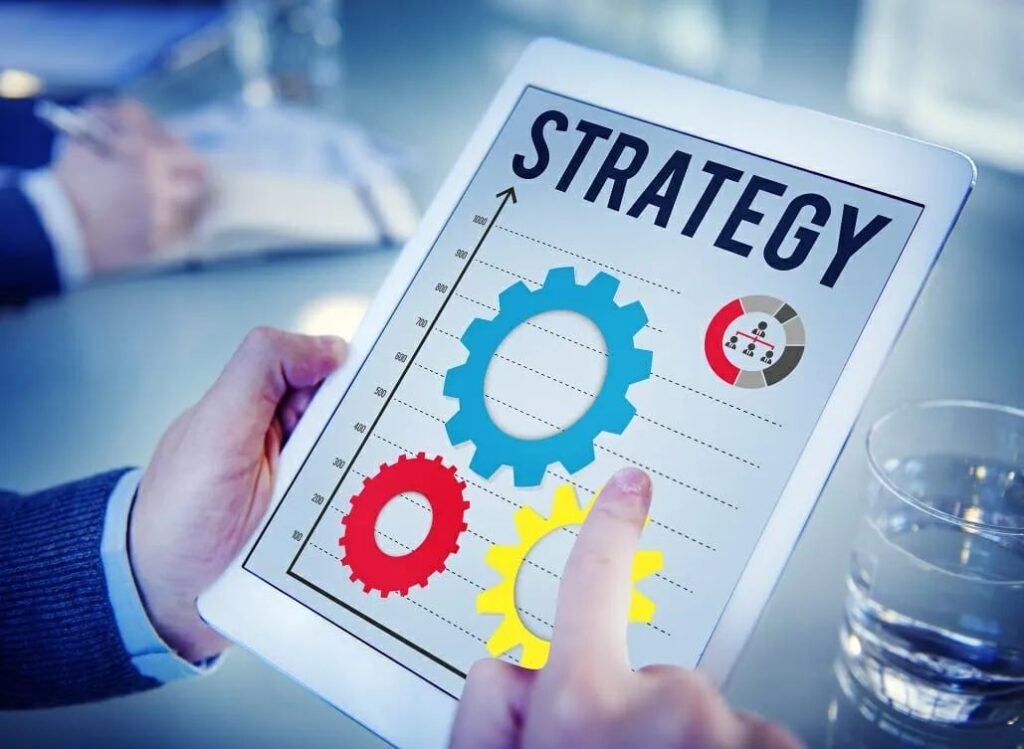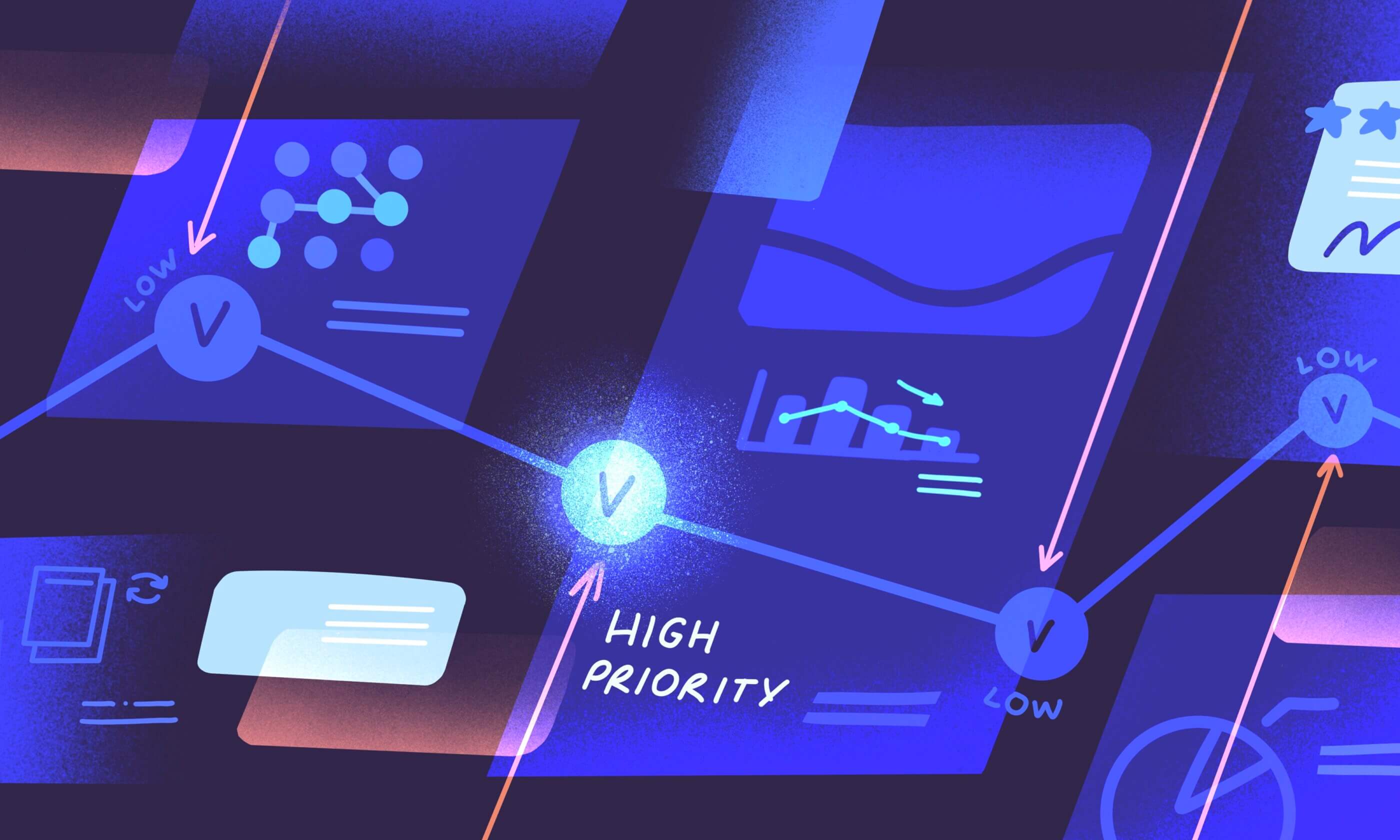
In the whirlwind world of high-stakes leadership, especially within the fast-paced tech industry, time often feels like an elusive commodity. For women leading innovative companies, the pressure to juggle back-to-back meetings, a mountain of priorities, and relentless decision fatigue can make burnout feel closer than ever. It’s a universal challenge, one that 90% of entrepreneurs acknowledge as their greatest struggle: wrestling with time management.
Yet, this isn’t an unchangeable fate. Imagine cutting down from an 80-hour workweek to a mere 20, growing a multi-seven-figure business, and still being present for family, travel, and even hobbies like learning Spanish. This isn’t a fantasy; it’s the reality for leaders who have mastered the art of time management. The insights shared here, drawn from the experiences of successful female entrepreneurs and top executives, reveal that with the right strategies, you can lead more effectively, scale your business, and reclaim precious time for yourself and your life.
We’ve gathered insights into proven steps that empower leaders to achieve more without sacrificing personal time or health, all while making a bigger impact in their roles. These aren’t theoretical concepts; they are actionable techniques, shared by individuals at the helm of demanding organizations, designed to bring clarity, control, and calm to even the most chaotic schedules. Get ready to transform your approach to time and unlock a new level of productivity and personal fulfillment.

1. **Declutter Your Mind with a Brain Dump**One of the most immediate and impactful ways to regain control of a swirling schedule is to simply get everything out of your head and onto a list. Katy Allen, founder of the digital calendar brand Artful Agenda, swears by this technique. When she finds herself with a lot on her plate, her first step is a “brain dump” list—jotting down every single thing she has to do, no matter how big or small, professional or personal. This externalization immediately reduces mental clutter and the anxiety of forgetting something important.
Once the comprehensive list is assembled, the crucial next step is to refine it. Allen meticulously whittles down her list, first by identifying tasks that can either be eliminated entirely or delayed without adverse consequences. This initial triage is vital for removing non-essential items that often consume mental energy and precious time. It’s about being honest about what truly needs to be done versus what merely feels urgent.
Following this, she highlights the most important remaining items, typically scheduling three as priority tasks for the current day. The rest of the items are then strategically assigned to subsequent days. This structured approach, starting with a brain dump and moving to intelligent prioritization, ensures that each day begins with a clear, manageable focus, preventing the feeling of being constantly overwhelmed by an ever-growing to-do list.
Read more about: 14 Simple, Science-Backed Strategies for Deeper Sleep Without Relying on Pills

2. **Master the Art of Delegation and Outsourcing**For any leader, especially in a growing business, the ability to effectively hand off responsibilities is an absolute game-changer for time management. Helen Underwood, a U.K.-based entrepreneur running Underwood Training, emphasizes that delegation is not just about offloading tasks; it’s about empowering others. Her crucial advice: when you delegate, “let that person own the task – don’t keep checking on them.” This trust is essential not only for the delegate’s growth but also for the CEO to truly remove items from their mental and physical to-do list.
Research powerfully supports this strategy, showing that CEOs who delegate well achieve a 33% higher growth rate and generate 33% more revenue than those who don’t. The key lies in understanding what *must* have your expertise and what can be skillfully handled by others. If you’re not the *only* one in the company who can do it, then it’s a candidate for delegation. This principle frees up a tremendous amount of your time, allowing you to focus on high-impact strategic initiatives that truly require your unique vision and leadership.
Sometimes, expanding a full-time team isn’t immediately feasible due to cost or complexity. This is where outsourcing becomes an invaluable ally. By bringing in virtual assistants or external specialists for time-consuming administrative duties or specific projects, you can gain the support you need without the overhead of a full-time hire. The critical element in both delegation and outsourcing is transparent communication: provide crystal-clear instructions and expectations. Take the time to walk individuals through tasks, promoting clarity and ensuring that tasks are completed efficiently and correctly, ultimately saving you time and effort in the long run.
Read more about: The Daily Habits That Empower 12 Successful Female CEOs for Peak Mental Clarity

3. **Strategically Block Your Time for Deep Work**Multitasking might seem like the natural path for busy executives, but the reality is starkly different. What often appears as multitasking is merely rapid task-switching, a practice proven to reduce productivity by as much as 40%. This is productivity no CEO can afford to lose. Instead, successful leaders intentionally block out dedicated time for specific tasks on their calendars, recognizing that focused, uninterrupted work is the bedrock of true efficiency.
Jillian Krenk, founder of budgeting app Moneywellth, exemplifies this by carving out specific time slots for different types of work. She dedicates one hour daily as an “open office hour” for employee questions, ensuring her team knows when she’s available. Beyond this, she meticulously blocks out separate times for focused work, emails, and meetings. This structured approach helps her avoid chaotic transitions, maintain focus, and effectively combat procrastination.
An even more powerful application of time blocking is task batching. By grouping similar tasks together—like responding to all emails at once, making all necessary phone calls in a single block, or dedicating a specific chunk of time solely to strategic planning—you significantly increase your chances of reaching a “flow state.” This state of deep immersion can boost productivity by an astounding 500%. Moreover, don’t shy away from blocking out time simply for “focusing” or “thinking.” Unscheduled time like this is invaluable for tackling complex problems, developing innovative ideas, and gaining clarity without the pressure of an immediate deliverable, allowing for strategic thought and creative breakthroughs.
Read more about: Unlock Your Dream Vacation for Under $1000: 14 AI Hacks to Plan Your Next Escape Effortlessly

4. **Redefine Your Relationship with Meetings**Meetings, while sometimes necessary, are often cited as the ultimate productivity killer in the corporate world. Studies have found that nearly 75% of them are entirely ineffective, consuming valuable time without yielding proportionate results. For visionary leaders, minimizing meetings is not just a preference; it’s a strategic imperative. Polly Hammond, a Barcelona-based digital wine marketing expert and founder of 5forests, offers her “single most valuable” time management tip: absolutely no meetings on Mondays.
Hammond’s “no-meetings Mondays” initially created space for her to focus on her own business. However, she quickly discovered a surprising secondary benefit: many Monday morning client “asks” were tasks they could easily handle on their own. By giving clients a day at their desks, she empowered them to resolve issues independently, allowing scheduled time together to focus on strategy and business building. While she makes exceptions for major emergencies, this rule significantly optimizes her interaction time.
Beyond just cutting down on meeting frequency, it’s crucial to optimize the meetings that *do* need to happen. Utilizing collaborative tools like Asana, as practiced by the Lifehack Method co-founders, can dramatically reduce the need for constant verbal check-ins by centralizing communication and task updates. When a meeting is unavoidable, strategic scheduling can help; for instance, pushing them to the end of the week when energy levels are typically lowest can minimize disruption to high-priority deep work sessions earlier in the week. The goal is always to maximize impact while minimizing time spent in unproductive discussions.
Read more about: The 12 Strategic Time-Wasting Activities That Top CEOs Religiously Avoid for Peak Performance and Growth

5. **Cultivate a Distraction-Free Environment**In our hyper-connected world, the constant barrage of notifications, emails, and messages makes sustained focus an increasingly rare and valuable commodity. Diana Akchurina, founder of marketing agency Easy Communications, champions the rigorous elimination of unnecessary distractions. Like many leaders, she recognizes that an endless stream of digital pings makes concentration exceedingly difficult, prompting her to actively unsubscribe from irrelevant newsletters and leave unnecessary messenger groups. This proactive pruning of digital noise is a fundamental step toward reclaiming mental bandwidth.
Akchurina’s philosophy extends beyond merely silencing notifications; it’s about cultivating full presence in the moment. She emphasizes, “Being present in the moment is crucial. When working, focus solely on work, and when spending time with family, fully engage with them — without distractions like phones or other things.” This commitment to undivided attention, whether on a task or with loved ones, prevents the mental fragmentation that constant distraction causes.
Creating a distraction-free environment isn’t just about physical quiet; it’s about digital discipline. It involves consciously curating your digital landscape to support your focus rather than constantly pulling it away. This might mean setting specific times to check emails, turning off phone notifications during deep work blocks, or even creating a dedicated workspace free from visual and auditory interruptions. By actively managing your environment, both digital and physical, you create the optimal conditions for sustained concentration and higher quality output.
Read more about: 13 Unexpected Transformations: How to Fix Common Car Photography Mistakes for Jaw-Dropping Results
6. **Practice the Power of the Pause**When tasks feel overwhelming, or a project seems to be dragging on far longer than anticipated, the natural inclination might be to push harder, to grit your teeth and power through. However, experienced leaders understand the profound effectiveness of stepping back. Entrepreneur Allyson Conklin, who runs her eponymous PR firm, advises, “Just take a step back” when things feel overwhelming. This isn’t about giving up; it’s about strategic disengagement to gain fresh perspective.
Conklin notes that when she’s “in the trenches on a task, and it’s taking much longer than anticipated,” she intentionally steps away. She gives the task “some breathing room,” allowing herself to disconnect and revisit it later. There’s a unique magic, she finds, in “revisiting a task with fresh eyes and restored creativity…that seems to do the trick for me!” This momentary pause allows the brain to subconsciously process information, often leading to innovative solutions or simpler approaches that were obscured by intense, continuous focus.
This practice is not only beneficial for problem-solving but also crucial for preventing burnout. It provides a necessary mental reset, reducing frustration and allowing for emotional replenishment. Whether it’s a short walk, a quick break for a cup of coffee, or even stepping away for an entire evening, giving yourself permission to pause can dramatically improve both the quality of your work and your overall well-being. It’s a powerful acknowledgment that true productivity often comes not from ceaseless effort, but from intelligent, well-timed breaks.
Read more about: Danny Thompson: A Legacy of Innovation – The Bassist Who Redefined Folk and Jazz, and Enriched a Generation of Music

7. **Establish Unshakeable Boundaries**Setting clear boundaries is a vital, non-negotiable component of effective CEO time management, yet it’s often overlooked or seen as a sign of weakness. However, boundaries are not just for you; they are fundamental for a sustainable leadership journey and for your team’s understanding of what to expect. While some leaders may believe that working oneself to the bone is the only path to making a difference, the reality is that firm boundaries around your schedule and communication policies will make you *more* productive, successful, and competitive, not less.
These boundaries are essential for maintaining a healthy work-life balance and avoiding becoming one of the 79% of CEOs who routinely work on weekends. They define your availability, your response times, and your capacity, signaling to both yourself and your team that your time and energy are valuable and finite. This clarity helps prevent others from unconsciously encroaching on your personal time and empowers you to politely decline tasks or commitments that would exceed your capacity.
Stopping working overtime, for example, might seem impossible for many CEOs, but it’s a crucial boundary. By setting alarms to signify the end of the workday, leaders can become more mindful of their time and consciously choose to step away. Tracking how much time is spent on specific tasks or each week can also reveal areas where time is being wasted. Establishing and enforcing these personal and professional boundaries is an act of self-leadership, ensuring that you preserve your most valuable resource: your time and mental well-being, allowing you to consistently operate at your highest standard.” , “_words_section1”: “1947
Read more about: The ’60s Ghost: 14 Societal ‘Accessories’ That Vanished or Transformed Forever in the Roaring Decade

8. **Audit Your Time and Energy**To truly master your time, understanding its current allocation is essential. Many leaders feel their time vanishes, yet haven’t precisely tracked it. A comprehensive time audit monitors every hour, at work and home, for two weeks. This yields hard data on how you spend time, prioritize tasks, and identify areas for improvement or delegation.
The insights gained can be surprising. You might find certain meetings excessive, or low-priority tasks consume vital hours. This objective data empowers you to identify “low-hanging fruit” – easily optimizable areas – to streamline your calendar, ensuring efforts align with critical business objectives.
Beyond time, an energy audit is vital. Track your energy peaks and dips daily. This awareness lets you design a schedule capitalizing on natural rhythms. If mornings are high-energy, schedule demanding deep work then, tackling complex problems when focus is sharpest.
Combining time and energy audits provides a holistic view of your productivity. This dual approach optimizes your schedule not just for efficiency, but for sustained effectiveness and well-being, ensuring smarter work by aligning tasks with personal energy cycles.
Read more about: Beyond Instinct: 14 Cutting-Edge Ways Pro Athletes Engineer Victory Through Data Analytics

9. **Set SMART Goals**Effective time management isn’t just task management; it’s channeling efforts toward impactful outcomes. Goal setting is paramount for CEOs, guiding prioritization, motivation, and performance. Without clear objectives, even diligent efforts feel scattered and unproductive, making true progress elusive.
The most effective objectives follow the SMART framework: Specific, Measurable, Attainable, Relevant, and Time-bound. A Specific goal is clear. Measurable means tracking progress. Attainable is challenging but realistic. Relevant aligns with your vision. Time-bound provides a deadline, instilling urgency.
Once goals are SMART, strategically leverage them. Identify which goals, when achieved, create the greatest impact or move the “needle” furthest fastest. Focus energy on those with the most significant ripple effect, making subsequent goals easier or unnecessary. This ensures time is invested for highest return, accelerating business progress.
Read more about: Unlock Your Dream Vacation for Under $1000: 14 AI Hacks to Plan Your Next Escape Effortlessly

10. **Plan Ahead with Strategic Frameworks**For overwhelmed executives, planning ahead often seems luxurious. Yet, consistent pre-planning is a cornerstone strategy, transforming chaos into clarity. Leaders proactively design their week, setting themselves for success before Monday. This foresight distinguishes sustained high performance from sporadic activity.
The “Winning the Week Method” offers a robust planning framework. It begins by reviewing your last week, assessing successes and areas for improvement—crucial for continuous learning. This sets the stage for intelligently setting upcoming goals, broken into smaller, actionable tasks.
Subsequent phases involve prioritizing tasks to identify high-leverage items. Dedicated time blocks are then scheduled for these priorities, turning intentions into commitments. The method concludes with review and adjustment, reinforcing iterative planning. This process empowers clarity and proactive navigation of unpredictable weeks.
Even with chaotic schedules, planning ahead is essential. It builds resilience, not eradicates unforeseen events. A structured plan, even a flexible one, maintains control and clarity of core objectives. This enables strategic pivots when demands arise, ensuring critical work remains on track amidst leadership’s flux.
Read more about: Unlock Your Potential: The Ultimate Guide to 15 Free Online Courses for High-Income Skills in 2025

11. **Implement Advanced Task Prioritization**CEOs face endless to-do lists, making prioritization an immense challenge. The natural tendency is to tackle smaller, manageable tasks first. However, this often defers larger, impactful initiatives, hindering progress and fostering busyness without true productivity.
Strategic prioritization demands a mindset shift: focus on leveraging tasks. Identify which tasks, when completed, have the most significant positive impact, make other tasks easier, or even eliminate future actions. Asking “Which task has the most leverage?” propels you to new heights, concentrating efforts for greatest strategic advantage.
Success stories, like a client launching her own consulting business after leveraging tasks, highlight this approach’s transformative power. It’s about doing the *right* tasks in the *right* order, maximizing efficiency and impact. This clarity allows leaders to focus on what truly moves the needle for their organization.
Robust task management tools are indispensable for advanced prioritization. Platforms like Asana offer more than lists; they enable instant prioritization, ensure deadlines, centralize project information, and provide comprehensive overviews. These tools extend your strategic thinking, streamlining a CEO’s complex workload.
Read more about: Unlock Warp Speed: 14 Simple Steps to Supercharge Your Internet Connection Today

12. **Leverage Time-Saving Technology and AI**In today’s competitive business landscape, traditional time management alone is insufficient. Visionary leaders recognize technology as a strategic imperative for efficiency and impact. Investing in and effectively utilizing time-saving technology is key for busy CEOs to reclaim hours and amplify productivity.
The right tech stack automates or speeds up many daily operational tasks. Digital calendars organize schedules, while project management platforms like Asana manage projects with visual boards and automated workflows. Cloud storage ensures universal document access, and video conferencing simplifies communication, minimizing wasted time for seamless operations.
Perhaps the most transformative shift is AI integration. A staggering 79% of CEOs believe AI enhances business efficiencies, with 87% agreeing benefits outweigh risks. AI is now a practical tool for time optimization, assisting in dreaded tasks and freeing leaders for higher-value strategic work.
At the Lifehack Method, AI streamlines SOP creation. Using Loom to record a task, generate a transcript, then feeding it into ChatGPT transforms a multi-hour chore into minutes. This demonstrates AI’s tangible benefits. Continuous exploration of AI capabilities and team commitment to identifying new applications fosters an organizational culture that optimizes for speed and effectiveness.
Read more about: Unlock Your Digital Superpowers: 11 Keyboard Shortcuts That Will Transform Your Workflow and Save You Hours

13. **Cultivate a Powerful Daily Routine**Cultivating and adhering to a daily routine is fundamental for sustained CEO effectiveness and personal well-being. A structured routine provides clarity and control, anchoring your day amidst leadership pressures. It’s not about rigidity, but establishing a predictable rhythm supporting your highest professional and personal priorities.
The benefits extend beyond work productivity. It’s a holistic investment, improving sleep, stress management, mental health, and healthy habits. Consciously structuring your day creates space for these vital components, fueling your capacity for leadership, innovation, and resilience.
Successful CEOs exemplify routine’s power. Jack Dorsey incorporated meditation and a five-mile walk daily. Warren Buffet maintains a consistent morning breakfast and dedicated evenings. These underscore routines’ personal nature, yet universal effectiveness in providing structure and focus in demanding schedules.
When building your routine, first block time for activities that “refill your cup.” This might be a morning workout, quiet reflection, or a healthy breakfast. Thoughtfully allocate time for family, reading, or being outdoors. Distinct “start work” and “finish work” routines also cue transitions, helping you fully engage with tasks.
Read more about: Lifehacker’s Guide: 12 Game-Changing Reasons Why Backing Into Parking Spots Turbocharges Your Safety and Efficiency

14. **Nurture Hobbies and Interests Outside Work**The intense passion for running a business can easily blur work and personal life, tempting CEOs to dedicate 100% of their time to it. While commendable, this leads to burnout and a diminished quality of life. Recognizing the need for a fulfilling life beyond your business is a strategic move for long-term sustainability and mental fortitude.
Actively engaging in hobbies outside your professional domain powerfully achieves work-life balance. These activities serve as essential outlets for stress, frustration, and anxiety inherent in high-pressure roles. Stepping away, even briefly, allows your mind to decompress, offering a much-needed mental reset that prevents decision fatigue and fosters renewed creativity.
Beyond stress relief, hobbies provide invaluable opportunities for personal growth and connection. They let you explore different facets of your personality, learn new skills, and connect with like-minded individuals outside your professional identity. Whether reviving a childhood passion or trying a new endeavor, these pursuits enrich your life and broaden your perspective.
By consciously carving out time for personal passions, you send a clear message about holistic well-being’s importance. True leadership isn’t ceaseless toil, but cultivating a vibrant, balanced life that sustains energy, creativity, and overall happiness. These pursuits are integral components of a robust time management strategy for visionary leaders.
Read more about: Beyond the Gridiron: Why a New Wave of College Athletes is Powering Up for High-Paying Esports Careers and Redefining Success

15. **Prioritize Holistic Well-being (Sleep, Breaks, Self-Care)**Sustaining high CEO performance hinges fundamentally on prioritizing holistic well-being. Working unwell, highly stressed, or profoundly fatigued is counterproductive, leading to decreased efficiency and impaired judgment. True effectiveness stems from a foundation of sound physical and mental health.
Adequate sleep is arguably the single most critical factor. Consistently getting 7-9 hours of quality sleep nightly ensures you arrive at work fully rested, with clear mind and optimal cognitive function. It allows your body and brain to recover, dramatically impacting concentration and decision-making. Improving sleep hygiene, like limiting tech after 8 PM, enhances this foundation.
Beyond nightly rest, strategic breaks and taking time off are crucial. When overwhelmed, “taking a step back” for a short walk or an evening provides breathing room. This fosters mental processing and often yields fresh perspectives. Full days off for rest prevent chronic burnout, ensuring you remain at peak capacity.
Finally, embracing broader self-care is non-negotiable for lasting impact. This includes physical self-care (exercise, balanced diet) and emotional/mental self-care (mindfulness, hobbies). Seeking professional help is a sign of strength. By building self-care into your schedule, you ensure your most valuable asset—yourself—is nurtured, allowing you to lead with sustained energy, clarity, and unwavering focus.
The journey to effective leadership isn’t solely measured by hours, but by strategic impact and cultivated quality of life. Insights from visionary female tech CEOs illuminate a clear path: where productivity and personal fulfillment are interconnected outcomes of deliberate time management. By embracing these actionable strategies—from auditing your time to nurturing holistic well-being—you’re redesigning your leadership, your business, and ultimately, your life. Take control, reclaim your hours, and step into a future of unparalleled clarity, purpose, and sustainable success.




